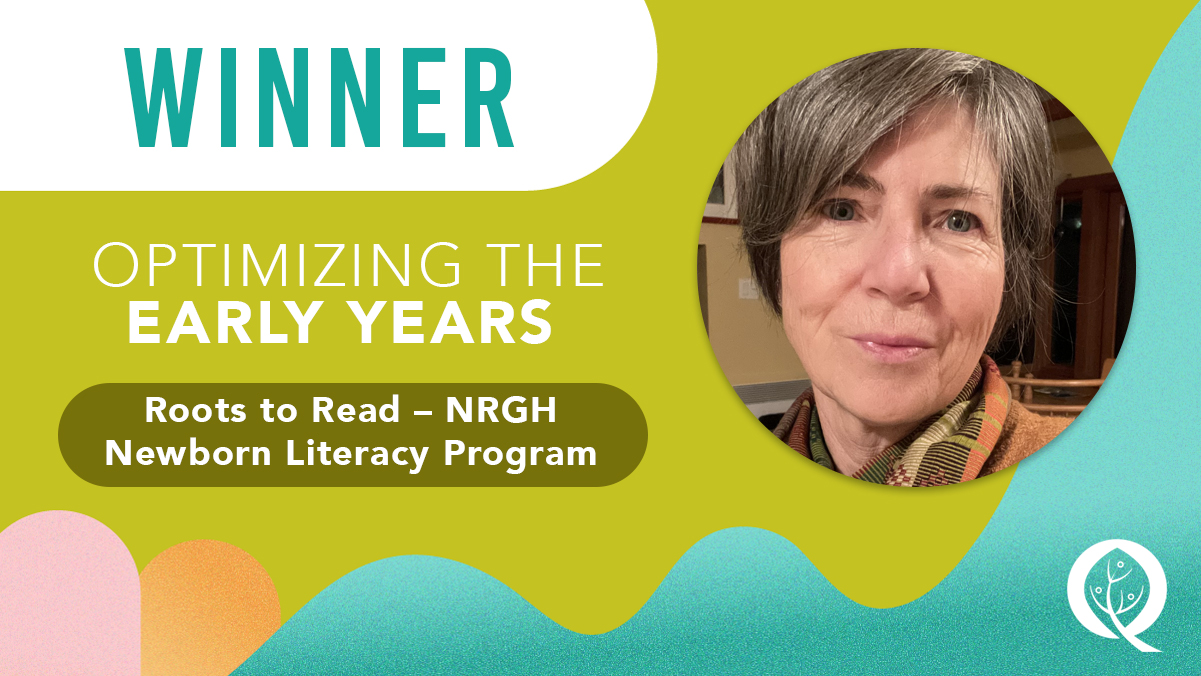- 2023
|
- Winner
|
- Optimizing the Early Years
The power of literacy cannot be understated.
From birth, an infant’s brain and its neural pathways are growing rapidly. A child’s language environment from six months to one year of life is critical to the development of their language skills. By age 5, 90% of their brain will have developed – for many, before they have even begun formal education.
So, Dr. Jane Pegg, a Nanaimo pediatrician, and Dr. William Ehman, a family physician who provides maternity and obstetric care, were understandably concerned when Early Development Instrument (EDI) data collected by kindergarten teachers in the Nanaimo and Ladysmith school district showed delays in both short-term and long-term language and cognitive development, particularly in basic literacy. These numbers were amplified by the disruption to education by the COVID-19 pandemic.
In the declining numbers, the physicians saw an opportunity to turn the tide. Their solution was found in the creation of a newborn literacy program – and that’s how Roots to Read was born.
The goal of Roots to Read is to educate, equip and empower families with information and tools to promote literacy and language development in their child, beginning at birth – because the way families interact with their children from the moment they are born matters immensely to how they develop language and interact socially. Reading, speaking and singing to your newborn is also of vital importance in enhancing maternal well-being, and maternal/parental infant bonding.
“Building literacy skills in children is one of the most effective ways to ensure children can achieve their full potential in school and throughout life. Literacy opens doors to understanding, empathy, critical thinking, and the capacity for life-long learning,” says Dr. Pegg. “Through literacy, children learn communication skills and build emotional and social resilience.”
Roots to Read began with Dr. Pegg’s and Dr. Ehman’s realization that newborn discharge from Nanaimo Regional General Hospital (NRGH) included parent education about umbilical cord care, safe sleeping, car seat checks and the importance of vitamin D, but did not include literacy promotion.
“Families are influenced strongly by the guidance of health care providers, so implementing our program with discharge newborn care teaching reinforces the importance of their actions,” says Dr. Pegg. “New parents listen carefully and want to do what is best for their infant, especially when they are aware that they have the tools to impact their child’s development, regardless of their own literacy.”
Dr. Ehman and Dr. Pegg then established a working group to develop the newborn literacy program. They modeled it after similar successful programs in Nova Scotia and Ontario, and brought on partners in the Canadian Children’s Literacy Foundation and Nanaimo & District Hospital Foundation. The working group also included representatives from maternity primary care, consulting pediatrics, perinatal and neonatal nursing, and community partners such as the Vancouver Island Regional Library, Tillicum Lelum Indigenous community and Literacy Central Vancouver Island.
Now, every newborn at NRGH and in the community through home births is given a reusable bookbag, many of which have been handmade by community volunteers. In it new parents will find two new books, cards with early years literacy tips from the Canadian Children’s Literacy Foundation, a child library card application form, a nursery rhyme booklet, a card insert with links to find out more about Roots to Read, QR link to program feedback survey, and donation link.
More than 1,000 bags have been distributed since launch in June 2022. It’s early days for determining how impactful the program has been, although feedback from families has been universally appreciative.
But if there’s one measure for success, it’s that Roots to Read is accessible and inclusive for all parents. Book choices are carefully curated. Books must be durable in little hands, engaging for infants and older siblings, and represent the diversity of the Island’s population. Roots to Read aims to support local BC authors and publishers, with a particular mandate to include an Indigenous authored or illustrated book annually.
“ ‘Serve and return’ interactions include reading, storytelling, and singing and are particularly beneficial when they are experienced socially, shared with family, and connected to culture,” says Dr. Pegg. “Supporting our families with information that using their own cultural practices and first language is the best way to support their infants’ literacy is a priority of Roots to Read.”


